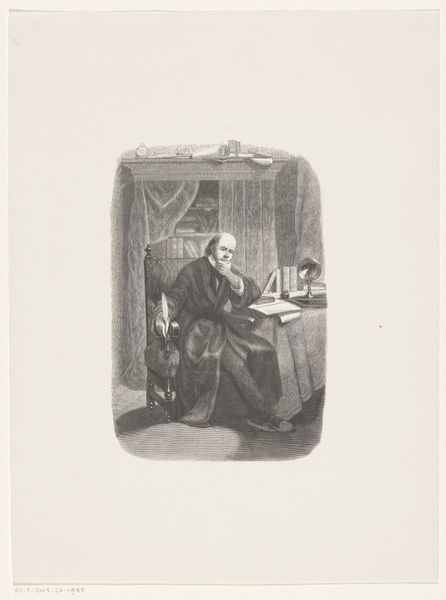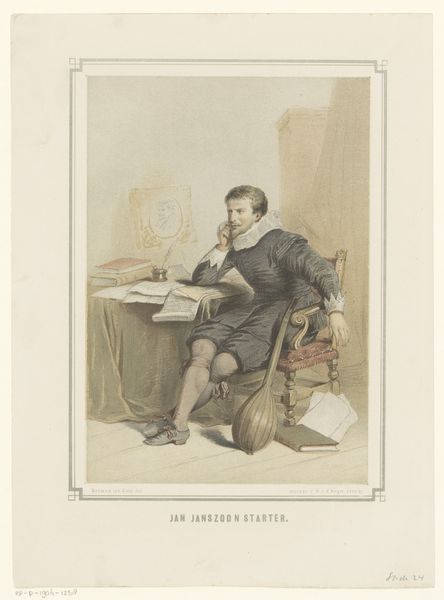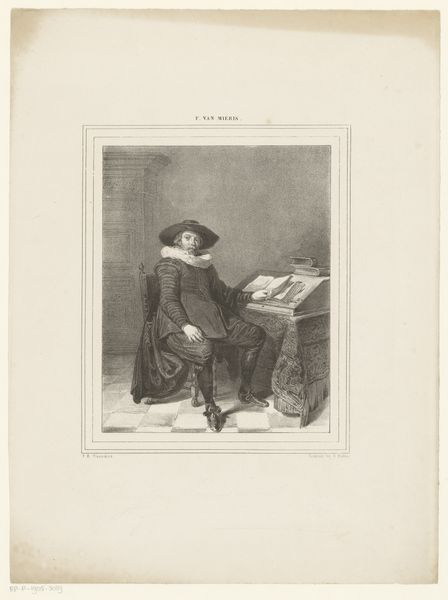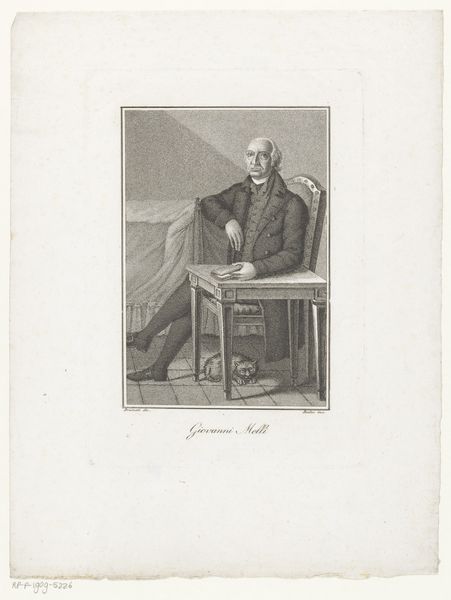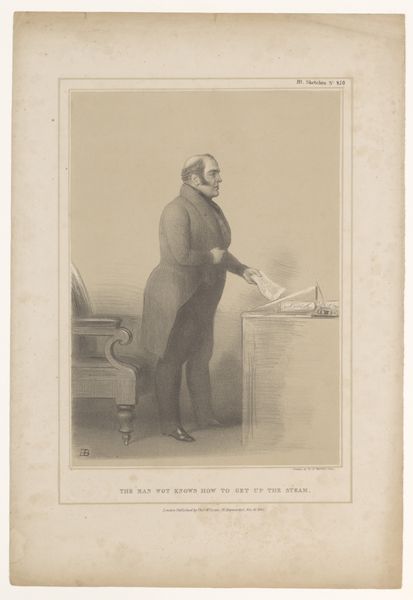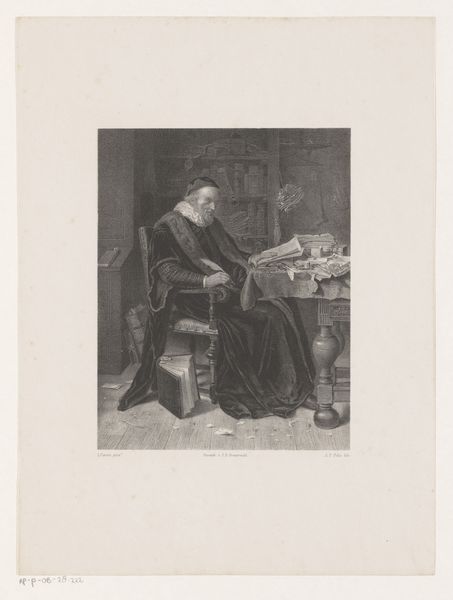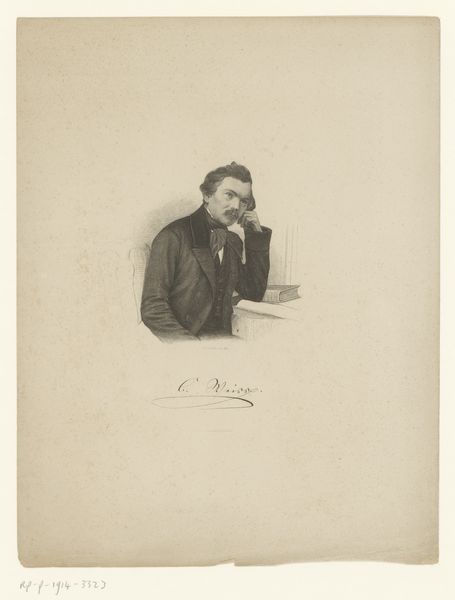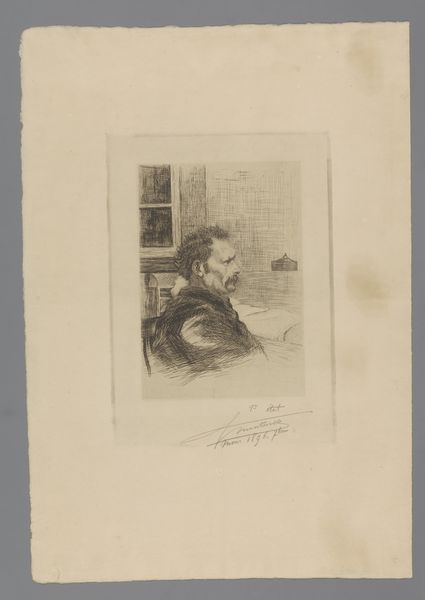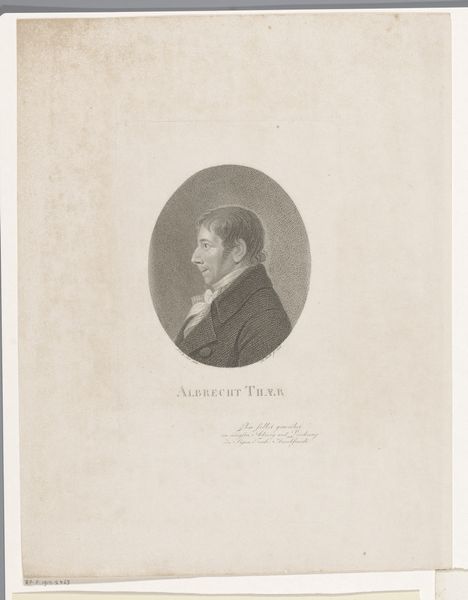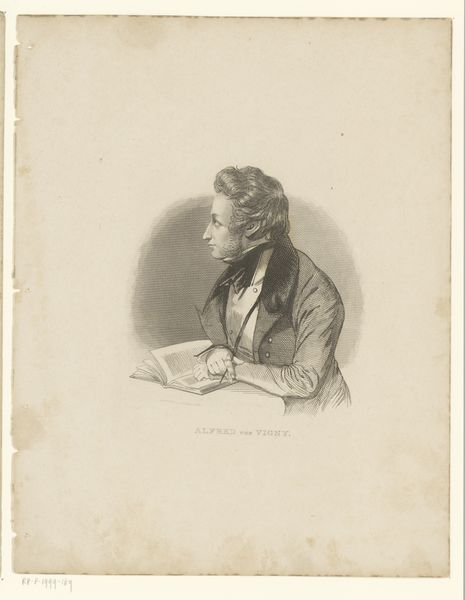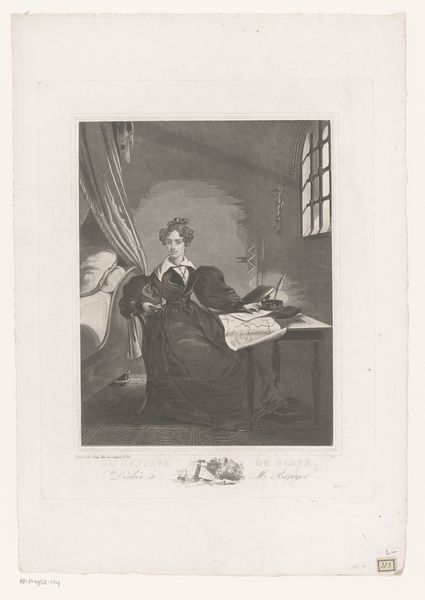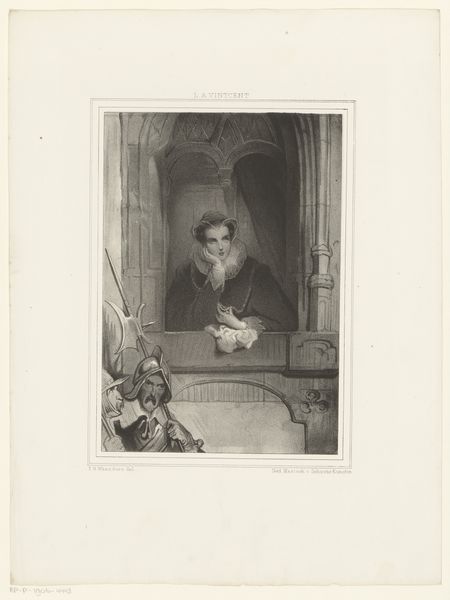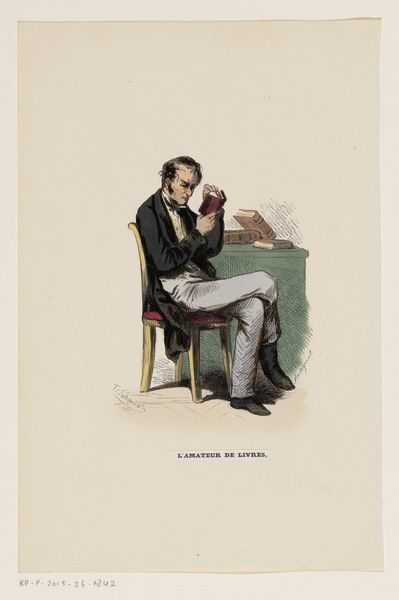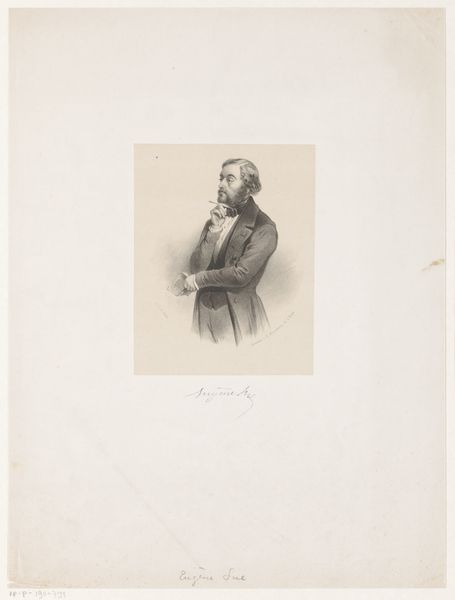
Dimensions: height 225 mm, width 140 mm
Copyright: Rijks Museum: Open Domain
This print, "Bernard ter Haar in zijn werkkamer," was made by Carel Christiaan Antony Last using a technique called lithography. It’s a process that involves drawing with a greasy crayon onto a stone or metal plate, then treating it with chemicals so that only the drawn areas attract ink. Lithography emerged in the 19th century as a relatively affordable way to reproduce images, fueling the growth of mass media. This print gives us a glimpse into the life of a well-to-do scholar, surrounded by the tools of his trade: books, papers, and a comfortable chair. Look closely, and you’ll see the textures and details that Last was able to capture with his crayon. The subtle gradations of tone, the way the light falls on the subject's face, these are all hallmarks of Last's lithographic skill. Prints like these, multiplied and distributed, democratized image-making like never before. Considering this print as both art and artifact, we can appreciate how it reflects the changing landscape of labor, materials and technology in the 19th century.
Comments
No comments
Be the first to comment and join the conversation on the ultimate creative platform.
